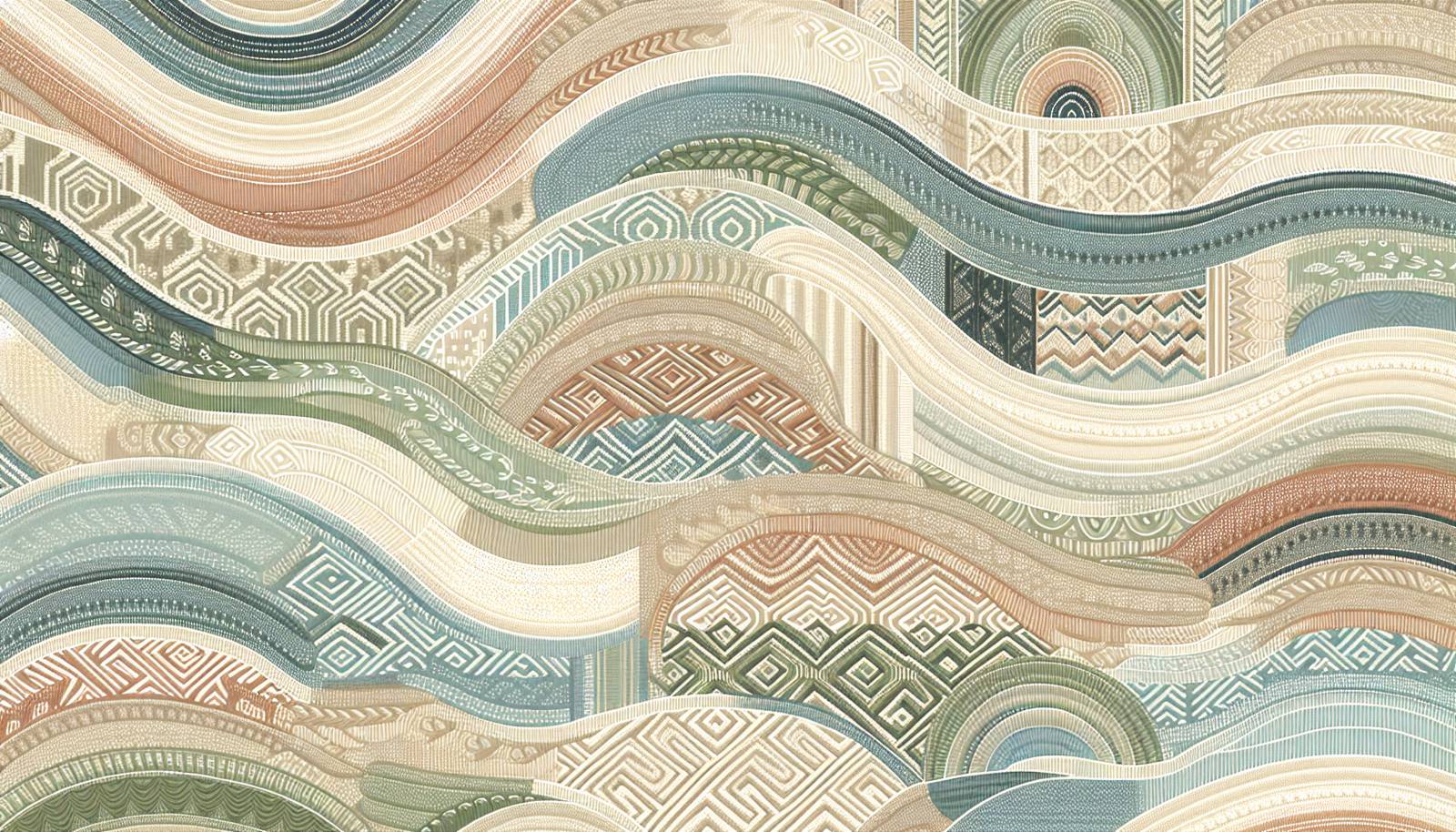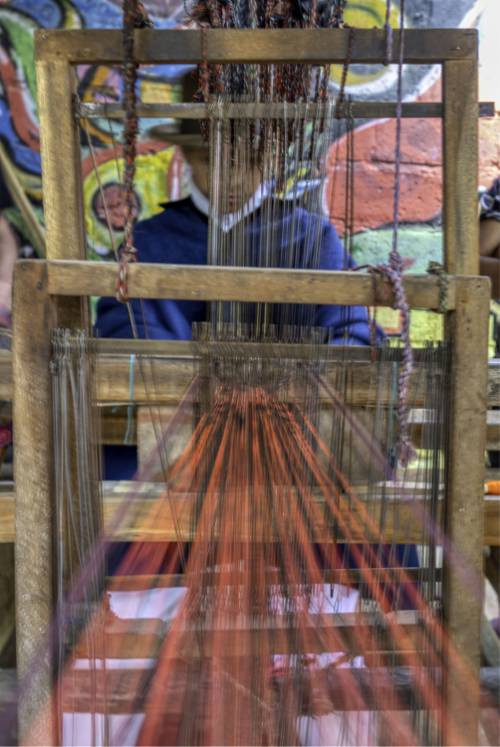
FAQ About The Cultural Significance of Traditional Weaving Practices

What is the importance of traditional weaving in cultural identity?
Traditional weaving is a vital part of many cultural identities as it encapsulates the history, beliefs, and social values of a community. The patterns, techniques, and materials used in traditional weaving often tell stories passed down through generations, reflecting a culture's unique heritage and aesthetic values.

How are traditional weaving practices being revived in contemporary art?
Traditional weaving practices are being revived in contemporary art by artists integrating these techniques into modern designs and installations. Contemporary artists often collaborate with traditional weavers to create pieces that respect ancient methods while reimagining them for the modern world. This revival helps preserve cultural heritage and promotes sustainability by valuing handcrafted, local resources.

What are some examples of traditional weaving practices from around the world?
Examples of traditional weaving practices include the Navajo weaving in the United States, characterized by its vibrant colors and intricate patterns; the ikat weaving from Indonesia, known for its unique dyeing technique; and the Peruvian backstrap weaving, famous for its vibrant colors and complex geometric patterns. Each of these techniques reflects the cultural background of its region.

Are traditional weaving techniques being lost?
While some traditional weaving techniques are at risk due to industrialization and the decline of artisan crafts, many regions are actively working to preserve these practices. Efforts include educational programs, government initiatives, and collaborations with contemporary artists to ensure these cultural heritages are not lost.

What materials are typically used in traditional weaving?
Traditional weaving often uses natural fibers such as wool, cotton, silk, and linen. These materials are chosen for their durability, availability, and connection to the region's environment. In some cultures, specific plants and natural dyes are also integral to the weaving process, further enriching the cultural significance of the practice.

How do traditional weavers contribute to sustainable practices?
Traditional weavers contribute to sustainability by using local, natural materials and employing eco-friendly methods. The emphasis on handcraft over mass production reduces environmental impact. Additionally, by maintaining these traditional crafts, communities preserve their cultural heritage, promoting economic sustainability through cultural tourism and the sale of handmade goods.

What is the role of symbolism in traditional weaving?
Symbolism plays a crucial role in traditional weaving, with specific patterns and colors often representing particular meanings, such as religious beliefs, cultural legends, and social status. For instance, in many African cultures, woven patterns can indicate a person's tribe or status, while in Asian cultures, colors might represent different spiritual or historical concepts.

How has globalization affected traditional weaving practices?
Globalization has had a mixed impact on traditional weaving practices. On one hand, it has increased access to diverse materials and markets for artisans. On the other, it has sometimes led to the homogenization of unique styles or the overshadowing of traditional crafts by mass-produced textiles. Nevertheless, globalization has also facilitated the sharing and appreciation of these cultural traditions worldwide.

Can traditional weaving be considered a form of cultural expression?
Yes, traditional weaving is a powerful form of cultural expression. It conveys the values, history, and stories of a community through its materials, techniques, and designs. Weavers use these elements to express personal and cultural identity, often creating pieces that are both functional and deeply symbolic.

What challenges do traditional weavers face today?
Traditional weavers face several challenges, including competition from mass-produced textiles, loss of interest among younger generations, and the decline of traditional skills due to modernization. However, many initiatives are working to address these challenges by promoting weaving as a valuable cultural heritage and providing platforms for artisans to showcase their work.

How does traditional weaving integrate into fashion and design today?
Traditional weaving integrates into contemporary fashion and design through collaborations between artisans and modern designers. These partnerships result in collections that highlight traditional techniques and motifs while offering novel and aesthetically appealing designs. Such integration contributes to cultural appreciation and helps sustain traditional weaving practices.

What initiatives exist to support traditional weavers globally?
Numerous initiatives aim to support traditional weavers, including non-governmental organizations (NGOs), cultural programs, and fair trade organizations. These initiatives often provide training, financial support, and market access to help weavers preserve their craft and improve their livelihoods.

Why is it important to preserve traditional weaving practices?
Preserving traditional weaving practices is important because they are a key component of cultural heritage, offering insights into the history, identity, and creativity of different communities. They play a critical role in sustaining local economies, artistic traditions, and social bonds within communities.

How do traditional weaving patterns vary across cultures?
Weaving patterns vary significantly across cultures, often influenced by geography, climate, and history. For example, Mexican serapes feature bold stripes and vibrant colors, while Japanese Kasuri involves intricate, indigo-dyed patterns. Each style tells a story unique to its cultural origin, reflecting the lifestyle and traditions of the community.

Can traditional weaving techniques be adapted for modern uses?
Yes, traditional weaving techniques can be adapted for modern uses, often with remarkable success. Designers and artisans are constantly experimenting with new materials and applications, including furniture, home décor, and technology interfaces, to keep the craft relevant and innovative.

How do traditional weaving techniques reflect environmental aspects of a region?
The materials and motifs used in traditional weaving often reflect the environmental aspects of a region. For instance, coastal communities may use fishing nets or shells as decorative elements, while mountainous areas might rely on sheep's wool. This connection to the environment underscores the sustainability and cultural identity embedded in traditional weaving.

What role do community and family play in traditional weaving?
Community and family play a pivotal role in traditional weaving, as skills are often passed down through generations within families. Weaving communities provide support networks where artisans share techniques and collaborate on projects, fostering community cohesion and cultural continuity.

How have technological advancements impacted traditional weaving?
Technological advancements have impacted traditional weaving by providing new tools and techniques to artisans, enabling them to innovate while maintaining traditional aesthetics. However, technology can also pose challenges by creating competition with automated manufacturing, necessitating a balance between preserving traditions and embracing new technologies.

What is backstrap weaving and where is it commonly practiced?
Backstrap weaving is a technique where the loom is attached to a weaver's body with a backstrap, providing tension for weaving. It is commonly practiced in Latin America, especially in Guatemala and Peru, where it holds immense cultural significance and allows artisans to produce intricate designs through portable, simple setups.

How does traditional weaving contribute to cultural heritage tourism?
Traditional weaving significantly contributes to cultural heritage tourism by attracting visitors interested in exploring indigenous crafts and cultures. Tourists often engage with artisans through workshops or markets, providing economic support to communities and fostering deeper cultural exchanges. This interaction helps sustain traditional weaving practices and boosts the local economy.
